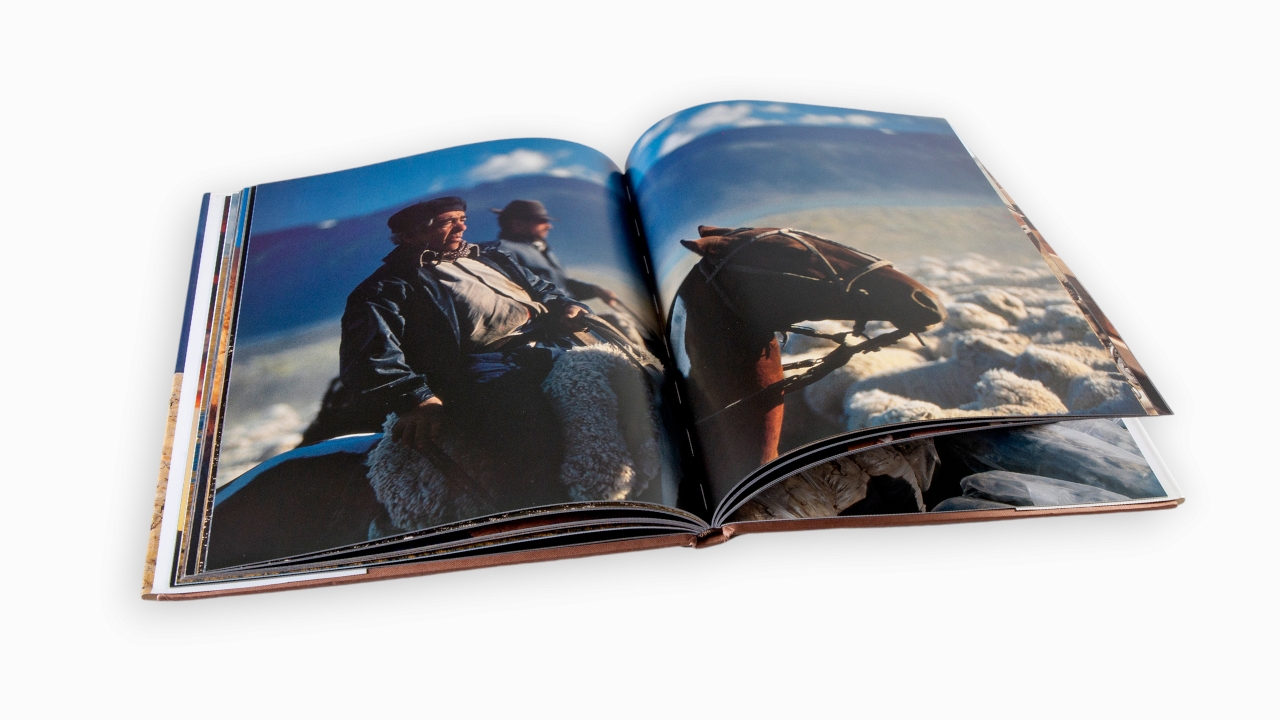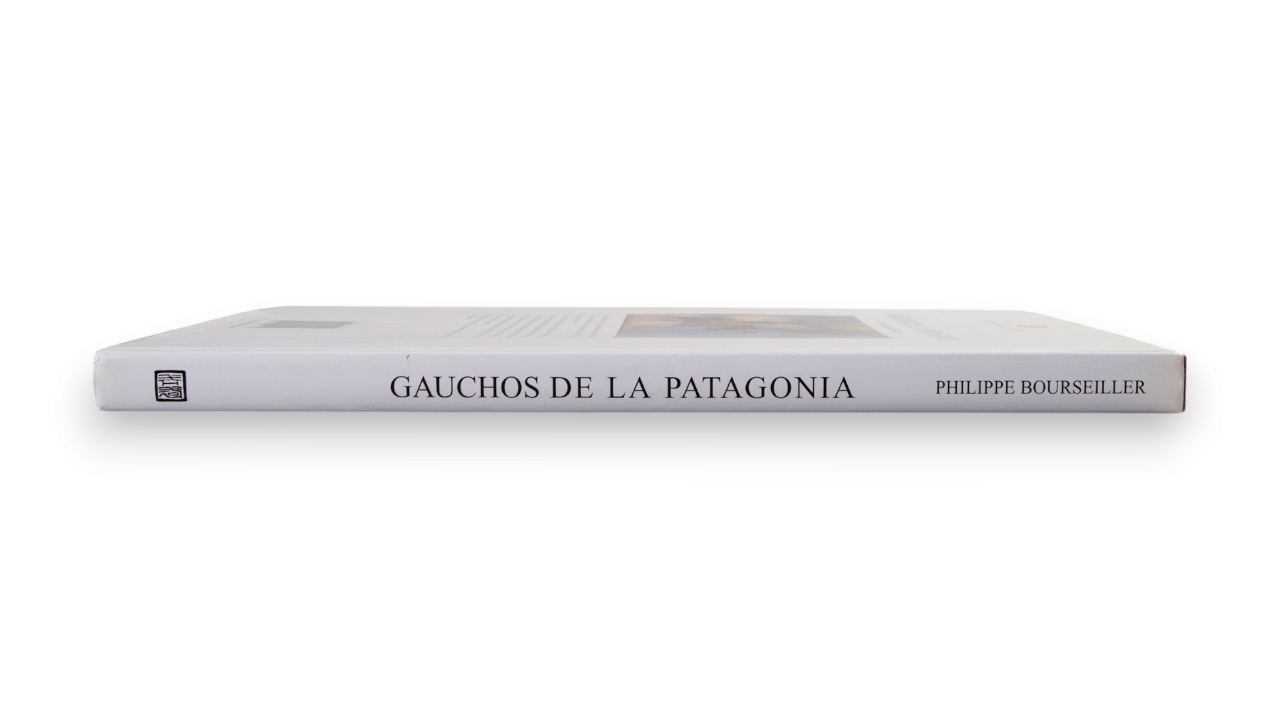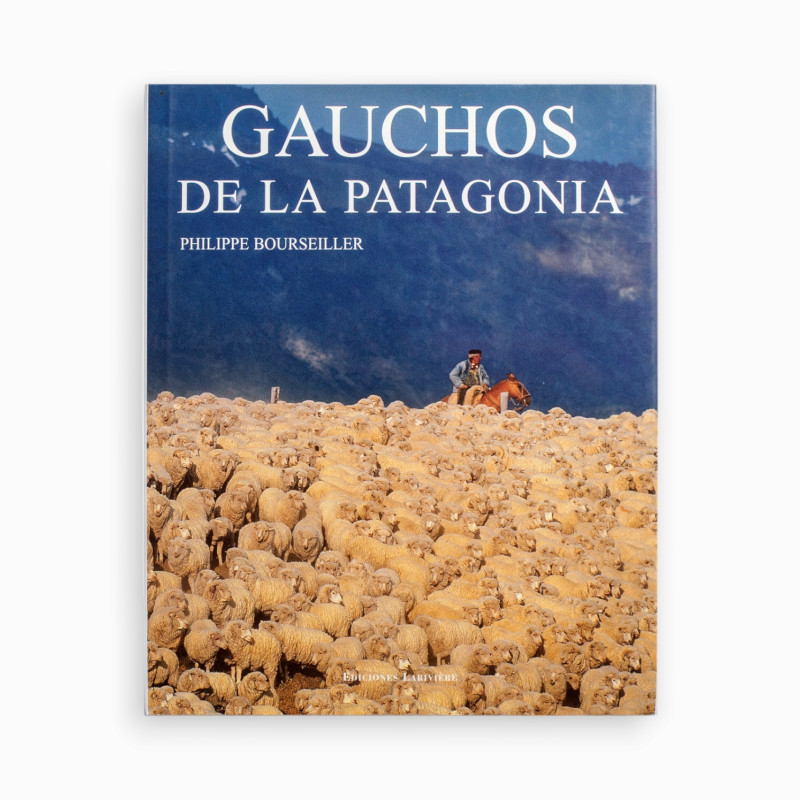







When travelling the vast open spaces of South America and visiting the estancias that dor the landscape, Philippe Bourseiller was able to portray with extreme sensitivity these men who seek to preserve a unique way of life and their ancestral traditions in an inhospitable land. In doing so, the photographer has paid homage to the inhabitants of a Patagonia that is still unfamiliar. Jean-François Chaix describes a region in which time magically melts away.
This book follows the steps of Nereo Corso, a true gaucho who must ride for hours to find a job, or a neighbor. Solitary sheep-tending and shared efforts during the shearing season reflect his wandering through the cycle of sheep farming, the main source of employment on the Pampas steppes.
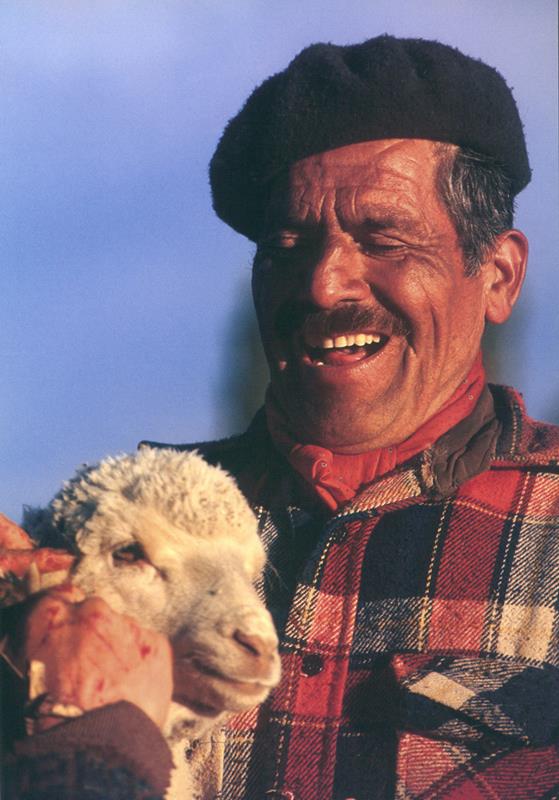
El trabajo en el corral se acompaña con bromas.
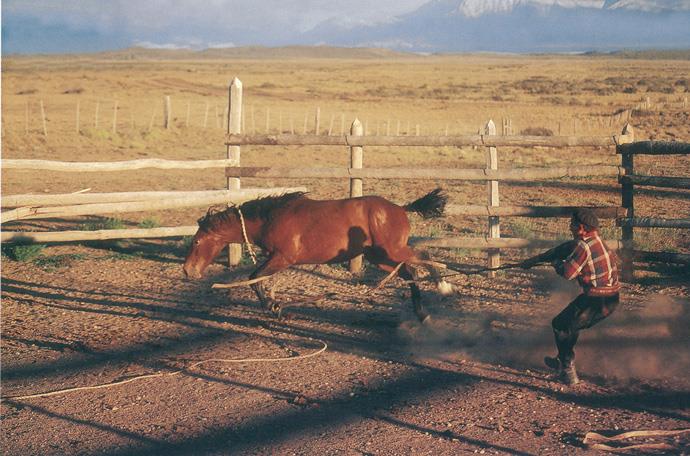
Antaño, el gaucho más respetado era el domador. La relación entre el hombre y su caballo se anuda en la violencia de la doma, ritual necesario.
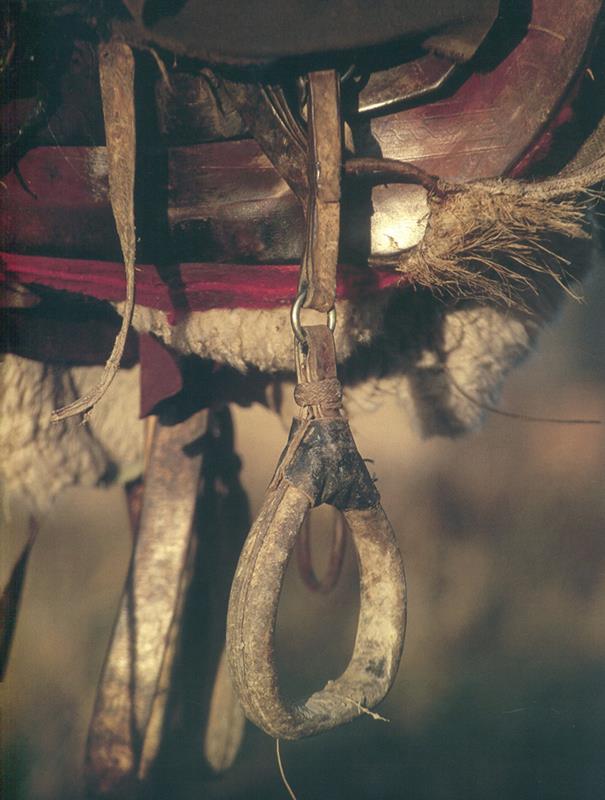
La montura, pieza principal del apero, debe ser ancha y confortable. Está cubierta por pellón, una mullida piel de oveja.
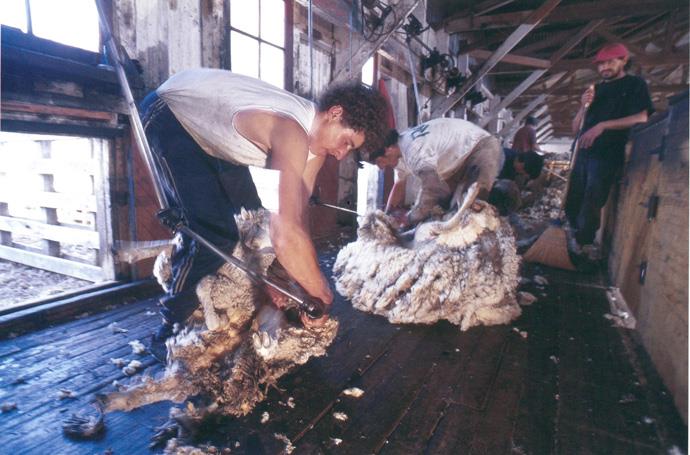
Las ovejas son guiadas hacia corrales que reciben unas sesenta cabezas cada uno. Cuando se levanta la barrera, la oveja avanza.
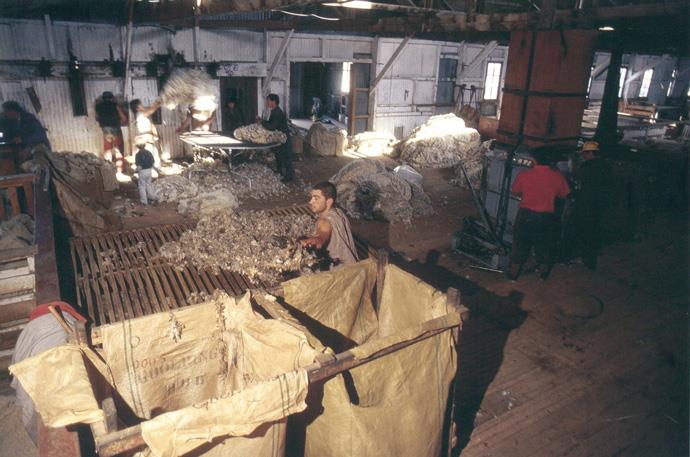
A los esquiladores se les paga según la cantidad de animales esquilados. Los chilotes vienen con sus familias y se quedan en el lugar entre cinco y quince días.
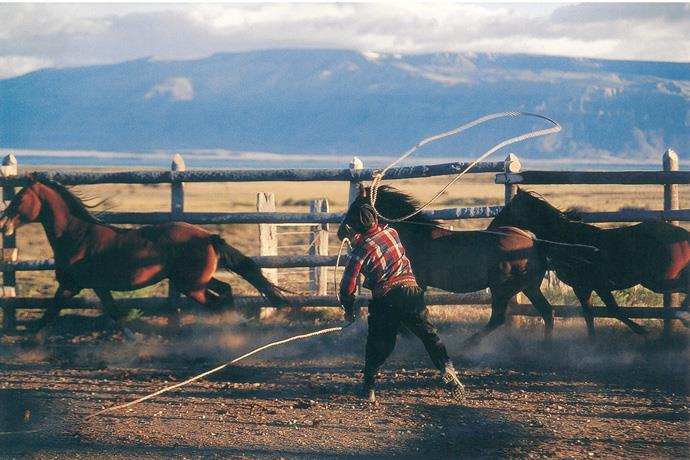
Durante dos o tres días, se ata el animal a un poste y se quiebra pacientemente su resistencia.
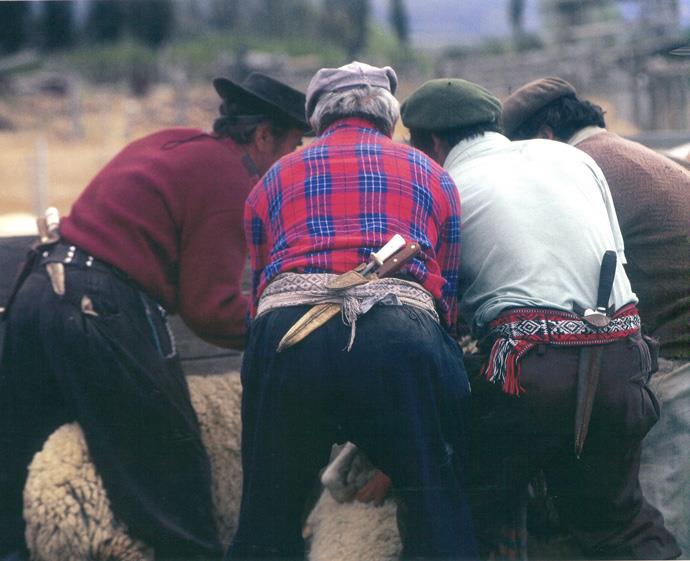
Entre varios gauchos se apresan a contener la ola de animales y separar las hembras de los machos.
